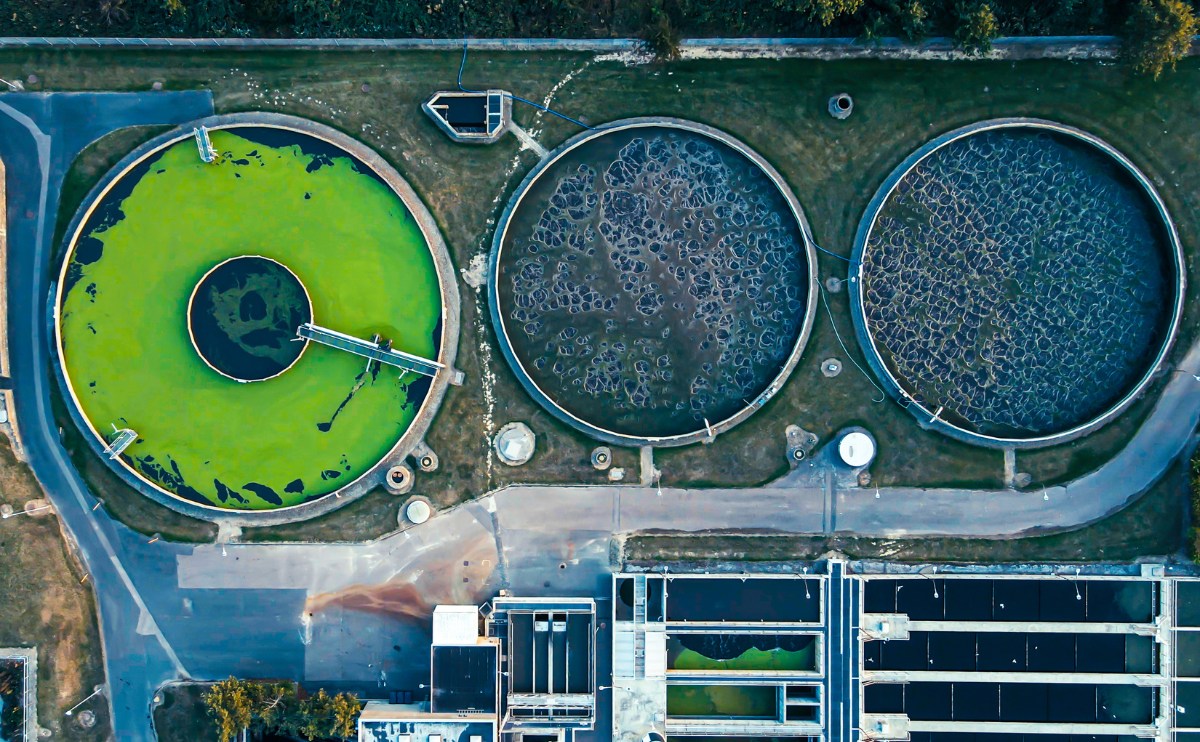Wastewater treatment plants often underperform—not always due to design flaws or operator error—but because of inefficient or low-quality MBBR media. If your system is showing signs like:
- Poor BOD/COD reduction
- Excessive sludge production
- Clogging in aeration zones
- Frequent biofilm sloughing
…it’s time to scrutinize the media in your MBBR reactor.
The Hidden Weak Link in Your STP
MBBR technology depends entirely on the carriers inside the reactor. If they’re poorly designed, underperforming, or low in quality, they simply can’t support enough biomass, resulting in unstable and inconsistent treatment.
Media that float irregularly or clump together create dead zones, compromise oxygen transfer, and reduce loading efficiency. Surface area matters—too little and you’re limiting biofilm growth, too much settling together and you introduce blockages. Optimized media can significantly improve pollutant removal rates, while substandard ones often struggle to maintain performance.
What to Expect from High-Quality MBBR Media
When choosing media for your STP, look for:
✔️ Uniform shape and consistent buoyancy
✔️ Specific surface area above 500–600 m²/m³
✔️ Non-clogging design that prevents matting
✔️ Durable virgin PP/PE polymer with excellent chemical and mechanical resistance
These characteristics are essential for steady performance and long media life.
The Real-World Impact of Media Upgrades
A better-quality media translates directly into plant performance improvements. Expect to see:
- Effluent consistently meeting or exceeding PCB discharge norms
- Cleaner water with less reliance on chemicals
- Lower energy consumption due to better aeration efficiency
- Reduced maintenance needs and less downtime
In many real-world upgrades, switching to better media has helped STPs achieve much higher BOD and COD removal efficiency and better nitrogen reduction, keeping them compliant and cost-efficient.
Why Media Quality Matters More Than You Think
- Surface Area Controls Performance
MBBR works by providing space for biofilm to grow. Superior media offer greater surface area and higher biofilm loading, resulting in stronger pollutant breakdown. - Hydrodynamics Affect Oxygen Transfer
Flotation dynamics directly influence how well the media mix and how effectively oxygen reaches microbes. Poor flotation creates blockages and dead zones; high-quality media ensure smooth fluidization and efficient aeration. - Chemical and Mechanical Durability
Media made from virgin HDPE or PP resist chemical exposure and mechanical abrasion. Cheap media degrade faster, reducing treatment efficiency and raising replacement costs. - Regulatory Compliance
With STPs now required to meet tighter BOD, COD, TSS, and nitrogen limits, media performance is not just about operation—it’s about compliance too.
Common MBBR Media Types and Their Applications
There are different types of MBBR media, each suited for specific applications:
- K1 Media (10×7 mm) – Ideal for compact MBBR systems with high movement.
- MBBR Media 16×22 mm – Commonly used in STPs for higher loading capacity and durability.
- FAB Media – Provides excellent surface area and is suitable for both aerobic and anaerobic zones.
- Recycled MBBR Media – More affordable but generally offers lower performance than virgin media.
- Virgin PP/PE Media – Long-lasting and preferred for industrial and high-load treatment plants.
Each type plays a role depending on STP size, inflow quality, and discharge requirements.
How to Identify Low-Quality MBBR Media (Red Flags)
It’s not always easy to tell if your media is underperforming—until your plant begins to fail. Watch for these red flags:
- Discoloration or rapid wear – Indicates poor material quality.
- Uneven floating or sinking – Causes dead zones and poor mixing.
- Low or inconsistent surface area – Biofilm doesn’t stick properly.
- Frequent media breakage – Leads to clogging and equipment damage.
- Foul odor or foaming in STP – Suggests poor biofilm development or sloughing.
If you see these signs, it’s time to replace your media before further damage is done.

Steps to Upgrade Your MBBR Media
- Audit Current Media
Evaluate existing carriers for shape, buoyancy, and surface area. - Calculate Target Requirements
Determine required media volume using your plant’s flow, organic load, and tank size. - Select Quality Media
Prioritize carriers with ≥ 600 m²/m³ surface area, stable buoyancy, and non-clogging architecture. - Plan Gradual Addition
Transition in phases to allow biofilm to acclimate, avoiding upsets. - Track Performance
Monitor BOD/COD, sludge volume, aeration efficiency, and compliance with discharge standards.
Bottom Line
The right MBBR media does more than support biofilm—it ensures consistent STP efficiency, helps meet norms, reduces operating costs, and improves plant resilience. Don’t underestimate your media’s impact: high-quality carriers are a small investment that yield significant returns.
At Bioflow Industries, we’re recognized as a leading manufacturer of all types of MBBR media, engineered for optimal surface area, longevity, and performance.



